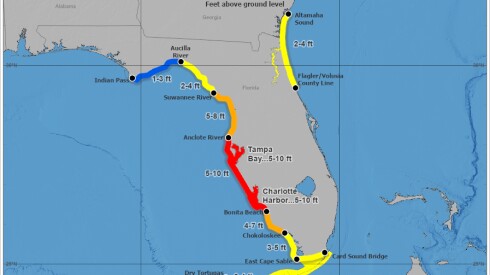People move to places oblivious to the disaster risks of that region or specific location.
Kevin Guthrie, Florida’s emergency management director, explained during a morning press briefing in Tallahassee that the state is trying to verify whether 20 of the deaths were as a result of the storm, or unrelated causes.
Of course they have money, but they will have damages.
A Storm Surge Warning remained in effect Thursday, Sept. 29, for parts of the coast including Savannah, Tybee and Ossabaw islands, according to the National Weather Service office in Charleston.
Gov. DeSantis said several people on the barrier islands of Lee and Charlotte counties were rescued by helicopter early Thursday morning. The area experienced “massive inundation.”
As shelters opened across Central Florida, officials warned that “historic flooding” could be in store for the region’s low-lying and flood-prone areas, with Hurricane Ian expected to bring torrential downpours through the region.
The storm surge predictions soared overnight to 12 to 18 feet for Englewood to Bonita Bay, a forecast so high a new color was added to the National Hurricane Center’s peak storm surge prediction map.
If the track holds — and forecasts stress that it may still change — it could reduce the flooding threat to Tampa Bay but raise it for coastal communities to the south like Sarasota and Cape Coral.
The tropical storm is expected to arrive in the Charlotte region “Friday into Saturday,” the National Weather Service. That also goes for the North Carolina foothills, parts of the North and South Carolina mountains and Upstate South Carolina.













